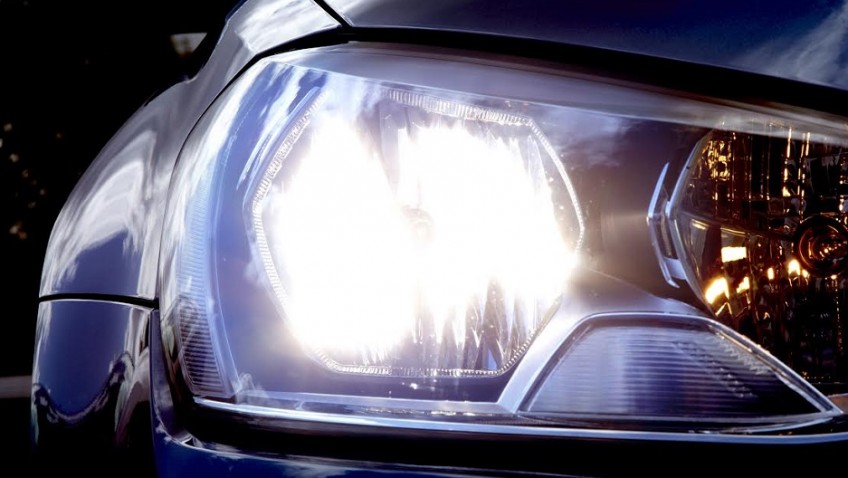With the shorter days and the wintery weather, it is vitally important to ensure that your car lights are in full working order.
Checking that your vehicle’s lights are working should form part of your vehicle’s regular maintenance checks.
- Headlamps should be cleaned to remove dirt so providing optimum light output. Dirt on the headlamp unit can cause refraction of the light that can lead to glare for other road users.
- You should try to replace your bulbs in pairs. If a bulb has failed and it is one of a pair of lights, replacing both will give consistent light output.
The Highway Code is very specific when it comes to using your lights when on the road.
Rule 226
You MUST use headlights when visibility is seriously reduced, generally when you cannot see for more than 100 metres (328 feet). You may also use front or rear fog lights, but you MUST switch them off when visibility improves
Check your headlights – and then use them
If you are taking to the road in heavy rain before you leave, you should try and make a quick check of your lights. Turn on your dipped beams, and check the lights are working on both sides, at the front and at the back.
When the rain does start to fall, you should turn your headlights on. Don’t just assume they already are – many cars’ instruments light up even when the headlights are turned off these days, which can be misleading.
Using your lights correctly when the roads are wet will ensure you can see and be seen. Remember it is just as important that other drivers can see you in good time.
Rain does not mean you need to use your main beam headlamps any more or less often than you would normally. You shouldn’t leave them on when you are driving towards or behind other traffic, as it will dazzle those drivers.
Fog lights
Remember, you mustn’t use your fog lamps unless the visibility is very poor – rear fog lamps will dazzle other road users, and the effect is intensified when there is spray coming out from the rear of the car. Front fog lamps have the same effect, but for cars ahead of you.
The Highway Code says that you should only use your fog lamps when the visibility drops below 100m. A good rule of thumb is to think about whether you can see the tail lights of the car in front of you. If you can’t, and you know it isn’t that far away, you (and they) should probably be using rear fog lamps. However, if you can, you probably don’t need them.
If you’re in any doubt about which lights to use, put yourself in the position of other drivers around you. Ask yourself what your car looks like to them, whether they can see you, and whether they might be blinded by any of your lights.
Advice from the Institute of Advanced Motorists
Peter Rodger the IAM’s head of driving standards said “It might sound obvious, but you cannot drive the same way in the dark as you would in daylight – but that’s what a lot of people do. Make allowances for your own abilities in darkness; your eyes take time to get used to the dark.
And be aware others might not be as careful as you, and might not be wearing reflective or bright clothing as they should do. Take on the responsibility of looking out for others, and your journey will give you a warm glow inside – even if it’s chilly outside.”
Replacing bulbs
There are two reasons why you would need to replace your bulbs. The first reason is if you have faulty or failed bulbs. The second reason is for upgrading your bulbs for better light output and performance.
When changing a bulb, you should read your vehicle’s handbook first.
- Turn the lights off.
- Let the bulb cool down if it has been used recently.
- If changing a halogen bulb avoid touching or holding the bulb by the glass. Use gloves and wear protective goggles as you will be handling glass.
- Once the bulb has been fitted, check it works and realign headlamps.
It is certainly worth upgrading to the latest halogen bulbs that can give you up to 130% more light.
Tina Foster reviews a set of Xenon car bulbs
Ring’s award winning Performance Halogens is a range of bulbs to upgrade a vehicle’s lighting for performance, styling or safety. Directly interchangeable with standard headlight bulbs, no costly wiring or switch upgrades are required. The Xenon 130 range of bulbs continues to meet and exceed the highest performance levels, keeping Ring at the forefront of automotive lighting.
I fitted these to my small Mercedes car and as a keen advocate to driving using the correct lights I was very impressed with the increase in vision, depth and intensity. These headlights certainly give more lumen’s and increased my confidence driving at night. As a very nervous night driver this is important. As we get older we need increasing light to operate and I can recommend the small investment of changing to these halogen bulbs.
The Xenon bulbs can be bought from major car component stockists or search www.ringautomotive.co.uk
Recommended prices are: Xenon 130 H4 £29.99, Xenon 130 H7 £34.99




